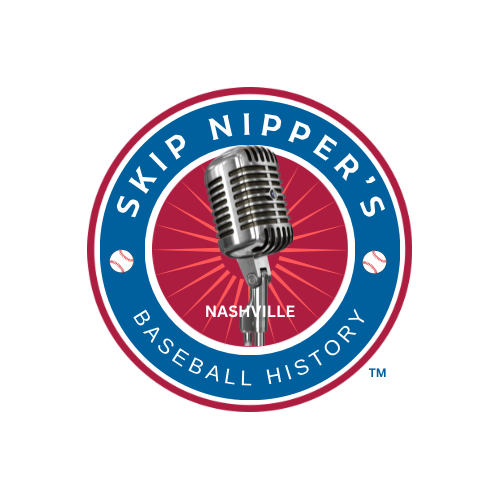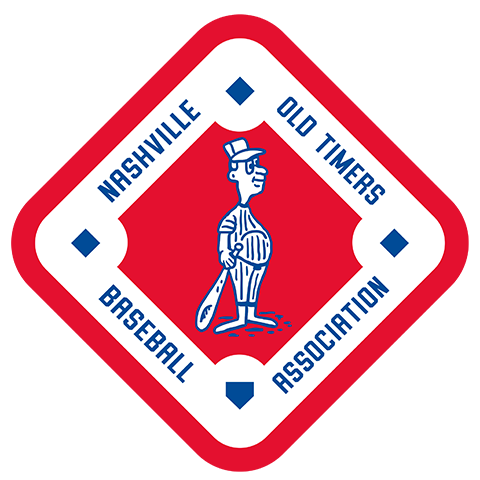On September 8, 1963, only 971 fans attended a double header between Nashville and Lynchburg at Sulphur Dell. It would be the final professional games played at the historic ballpark.
The end had been foretold by attendance numbers for several years: the Vols’ best year at the turnstiles had been in 1948, when 269,893 watched Nashville play, but the numbers never came close again as the club died a slow death. In 1954, the last of a three-year affiliation with the New York Giants, the total attendance was 89,470. That was the year Nashville slugger Bob Lennon hammered 64 home runs; even that achievement was not enough to drive fans to the ballpark.
Nashville was not alone.
Fan support dwindled across the entire country during the decline of minor league baseball in the 1950s. By 1960, there were 22 minor leagues; in 1950 there had been 58.[1]
In his book, Leveling the Playing Field, Paul C. Weiler puts it in perspective.
“In the late 1940s there were more than 450 minor league teams drawing more than 40 million fans to their game – a team average of 90,000 a season. Then television arrive in American homes, drastically reducing the demand for minor league baseball. By the late 1950s attendance had plummeted to around 15 million, where it remained for the next 20 years.”[2]
The issue was such a concern to Nashville Vols co-owner Larry Gilbert that he sold his 50% ownership to his partner, Ted Murray. Soon in debt with the ball club, Murray looked for buyers, too, and in 1958 area civic leaders banded together to form Vols, Inc., a publicly-held company with intent to purchase the Vols from Murray.
Try as they may, in subsequent years fans did not show up, leading to the demise of the franchise after that fateful double header in 1963. The club drew 52,812 for their final year.
Even before World War II, when attendance waned after a sensational 1940 season. Nashville led the league from opening day, won the Southern Association regular season and playoffs pennants, then won the Dixie Series against the Houston Buffaloes. Attendance stood at 138,602 even though war was looming.
During the war years, attendance remained respectable:
1941 97,282
1942 96,934
1943 76,570
1944 146,945
In 1945, turnout was 83,014, an honorable figure as soldiers were returning home.
Sports writer Raymond Johnson, in his “One Man’s Opinion” column in the Nashville Tennessean, often addressed the issue. He could see the decline coming, and in 1952 gave his view of the matter for that season’s crowds.
“Unless the fans turn out in larger numbers when Those Vols return home Friday than they have been averaging this season, Nashville will finish last in league attendance for the first time since 1931…That was the last time Nashville finished in the cellar and the season when Those Vols set their all-time losing record of 102 games.”[3]
Baseball devotees stepped up somewhat; attendance figures ended at 113,193 for 1952.
But Johnson compared the waning appearance of fans to 1931, when totals were only 67,338. The club won only 51 games that season. He understood that fans liked to see winning baseball.
“That was the first season for night baseball in Nashville…But even the uniqueness of nocturnal ball failed to lure the fans out to see a ball club that was as interesting to watch as two black cats fighting on a moonless night.”[4]
Night baseball did not bring out fans. Neither did Bob Lennon’s remarkable home run season. Even Nashville’s unbelievable 1940 season did not relate to more fans in the seats. The 1948 season record attendance mark at Sulphur Dell occurred in Larry Gilbert’s final season as manager, then only fell to 238,034 in a Rollie Hemsley-led Vols repeat championship performance.
From then on, the challenge was a changing America: inventive television productions, expanding highways, and automobiles being produced instead of tanks.
The revival of baseball began in the late 1970s. Larry Schmittou was instrumental in bringing professional baseball back to Nashville after a 15-year drought, and was part of that revitalization.
Weiler tells how significant the interest was across the country.
“Then came the resurgence in interest in minor league (as well as major league) baseball among baby boom families who did not feel like staying home every night to watch television. By the late 1990s total minor league attendance had reached 35 million, an average of about 200,000 a season for each of the nearly 175 teams.”[5]
2016 regular season attendance for 160 teams in 14 minor leagues (including only teams affiliated with major league baseball) was just over 37 million.[6] That averages to just over 3,000 fans per game. Nashville Sounds attendance at First Tennessee Park was 504,060 in 2016[7].
Raymond Johnson, Larry Gilbert, Ted Murray, and the 4,876 stock holders of Vols, Inc. would have been happy with those numbers.
Sources
Newspapers.com
Paper of Record
Sabr.org
Notes
[1] Ian Kahanowitz. “A Brief History of The Minor League’s Reluctance to Integrate (Part 3),” 27outsbaseball.com, http://www.27outsbaseball.com/uncategorized/a-brief-history-of-the-minor-leagues-reluctance-to-integrate-part-3/, accessed August 10, 2017.
[2] Weiler, Paul C. (2009) Leveling the Playing Field. Cambridge, MA: Harvard University Press.
[3] Raymond Johnson. “Vols Last in Attendance First Time in 21 Years,” One Man’s Opinion column, Nashville Tennessean, August 26, 1952, 15.
[4] Johnson.
[5] Weiber.
[6] Graham Knight. “Minor League Baseball Attendance in 2016,” Baseballpilgrimages.com, http://www.baseballpilgrimages.com/attendance/minor-leagues-2016.html, accessed August 10, 2017.
[7] “Pacific Coast League: Attendance,” milb.com, http://www.milb.com/milb/stats/stats.jsp?y=2016&t=l_att&lid=112&sid=l112, accessed August 10, 2017.
© 2019 by Skip Nipper. All Rights Reserved.



